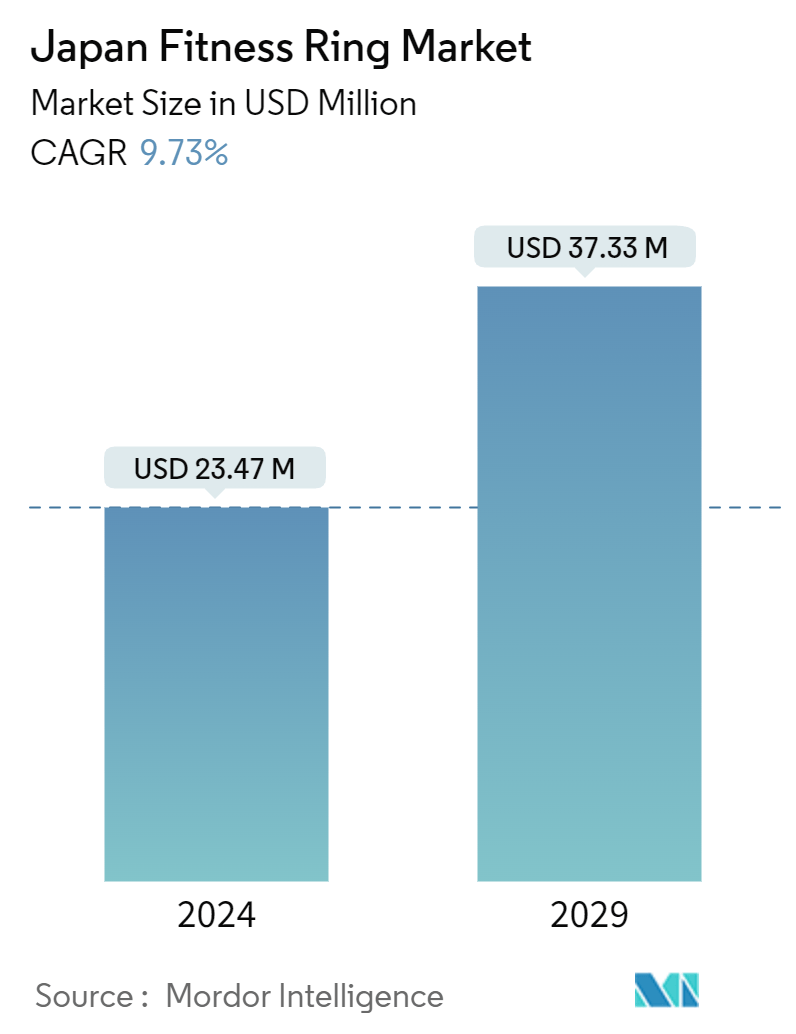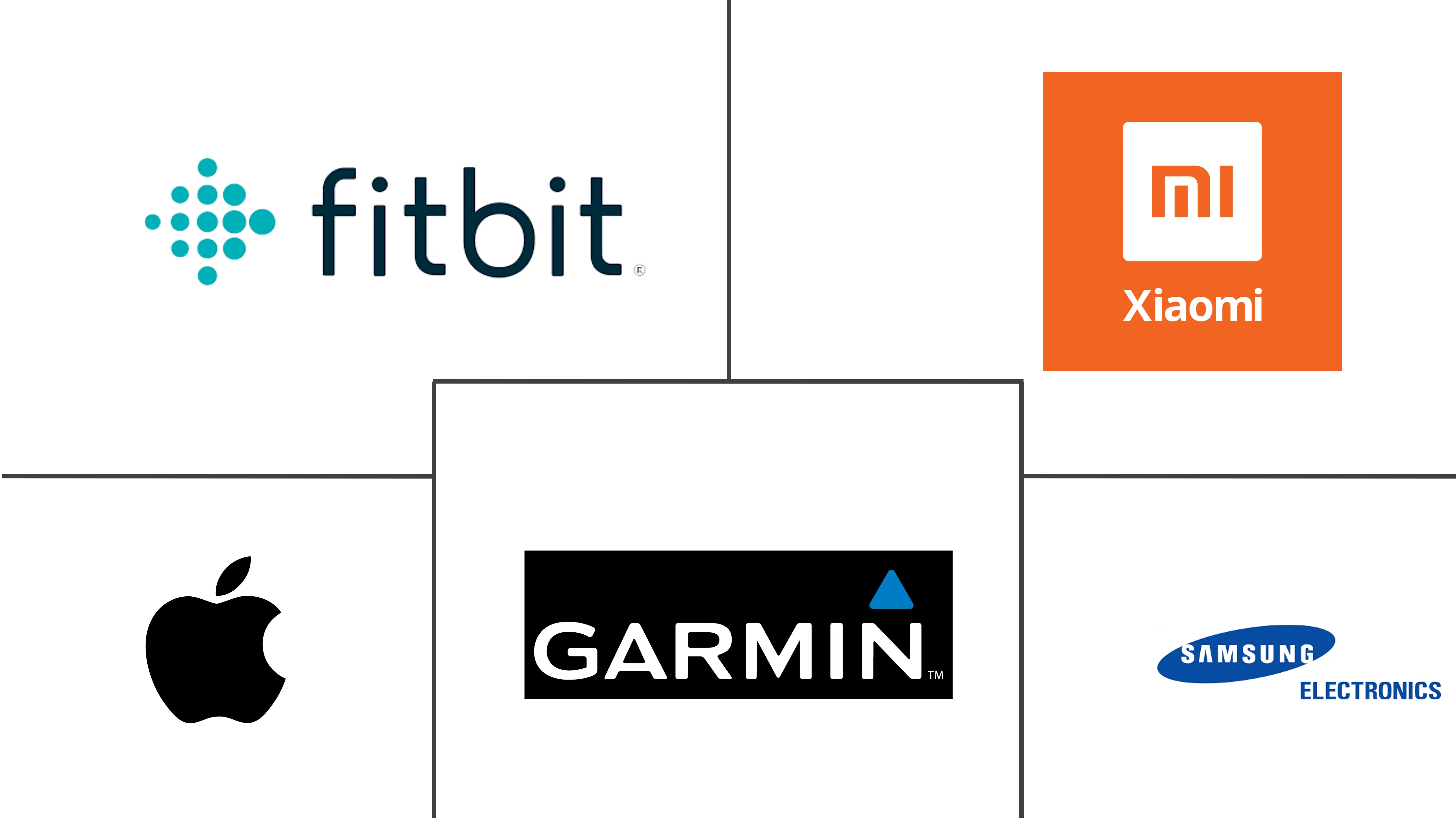Market Size of Japan Fitness Ring Industry

| Study Period | 2019 - 2029 |
| Base Year For Estimation | 2023 |
| Market Size (2024) | USD 23.47 Million |
| Market Size (2029) | USD 37.33 Million |
| CAGR (2024 - 2029) | 9.73 % |
| Market Concentration | Low |
Major Players
*Disclaimer: Major Players sorted in no particular order |
Japan Fitness Ring Market Analysis
The Japan Fitness Ring Market size is estimated at USD 23.47 million in 2024, and is expected to reach USD 37.33 million by 2029, growing at a CAGR of 9.73% during the forecast period (2024-2029).
- Japan's fitness ring market is witnessing steady growth, fueled by rising health awareness and the increasing adoption of wearable technology. These fitness rings, favored for their discreet design and sophisticated health-tracking features, find a receptive audience in Japan's tech-savvy populace, underscoring the country's potential as a burgeoning hub for the fitness ring market.
- Due to the growing focus on health and wellness, Japanese consumers are increasingly turning to fitness tracking devices, notably fitness rings. These rings, capable of continuously monitoring vital signs, resonate with health-conscious users aiming to enhance their lifestyles.
- Japan's rich heritage in electronics and technology is propelling the evolution and embrace of cutting-edge fitness rings. Features like AI-driven health insights, precise sleep tracking, and extended battery life are amplifying the allure of these devices.
- Given Japan's aging demographic, there's a heightened demand for health monitoring tools, especially those aiding the elderly in health management. In this context, fitness rings are emerging as pivotal instruments for preventive healthcare.
- Wearable technology is gaining traction in Japan, with consumers increasingly adopting devices such as smartwatches and fitness rings. The seamless integration of these wearables with smartphones and other IoT devices is further propelling market expansion.
- However, the Japanese fitness ring market grapples with challenges, notably the premium pricing of these devices. The competitive landscape is bustling, with both global and local brands jostling for prominence. This price sensitivity, especially among younger and budget-conscious consumers, could temper the adoption rate.

